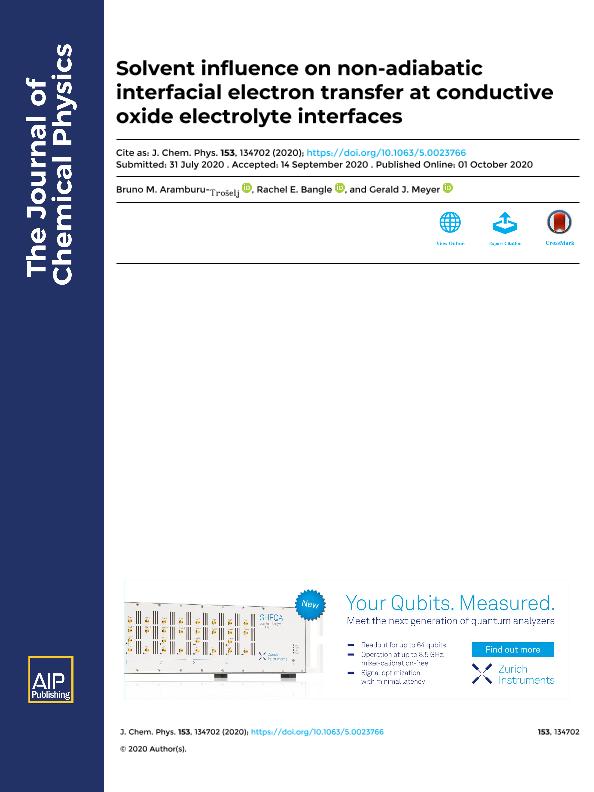Artículo
Solvent influence on non-adiabatic interfacial electron transfer at conductive oxide electrolyte interfaces
Fecha de publicación:
10/2020
Editorial:
American Institute of Physics
Revista:
Journal of Chemical Physics
ISSN:
0021-9606
Idioma:
Inglés
Tipo de recurso:
Artículo publicado
Clasificación temática:
Resumen
The kinetics for interfacial electron transfer (ET) from a transparent conductive oxide (tin-doped indium oxide, ITO, Sn:In2O3) to molecular acceptors 4-[N,N-di(p-tolyl)amino]benzylphosphonic acid, TPA, and [RuII(bpy)2(4,4′-(PO3H2)2-bpy)]2+, RuP, positioned at variable distances within and beyond the electric double layer (EDL), were quantified in benzonitrile and methanol by nanosecond absorption spectroscopy as a function of the thermodynamic driving force, -ΔG°. Relevant ET parameters such as the rate constant, ket, reorganization energy, λ, and electronic coupling, Hab, were extracted from the kinetic data. Overall, ket increased as the distance between the molecular acceptor and the conductor decreased. For redox active molecules within the Helmholtz planes of the EDL, ket was nearly independent of -ΔG°, consistent with a negligibly small λ value. Rips-Jortner analysis revealed a non-adiabatic electron transfer mechanism consistent with Hab < 1 cm-1. The data indicate that the barrier for electron transfer is greatly diminished at the conductor-electrolyte interface.
Palabras clave:
CHARGE TRANSFER
,
OXIDES
,
MOLECULES
,
ELECTRODES
,
KINETICS
Archivos asociados
Licencia
Identificadores
Colecciones
Articulos(INQUIMAE)
Articulos de INST.D/QUIM FIS D/L MATERIALES MEDIOAMB Y ENERGIA
Articulos de INST.D/QUIM FIS D/L MATERIALES MEDIOAMB Y ENERGIA
Citación
Aramburu Troselj, Bruno Martín; Bangle, Rachel E.; Meyer, Gerald J.; Solvent influence on non-adiabatic interfacial electron transfer at conductive oxide electrolyte interfaces; American Institute of Physics; Journal of Chemical Physics; 153; 13; 10-2020; 1-11
Compartir
Altmétricas




